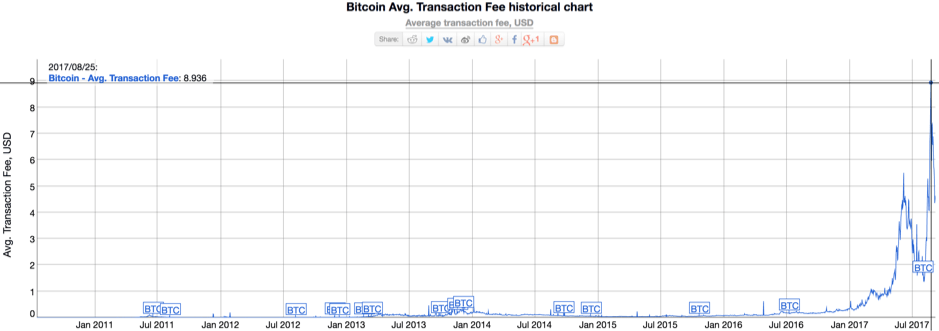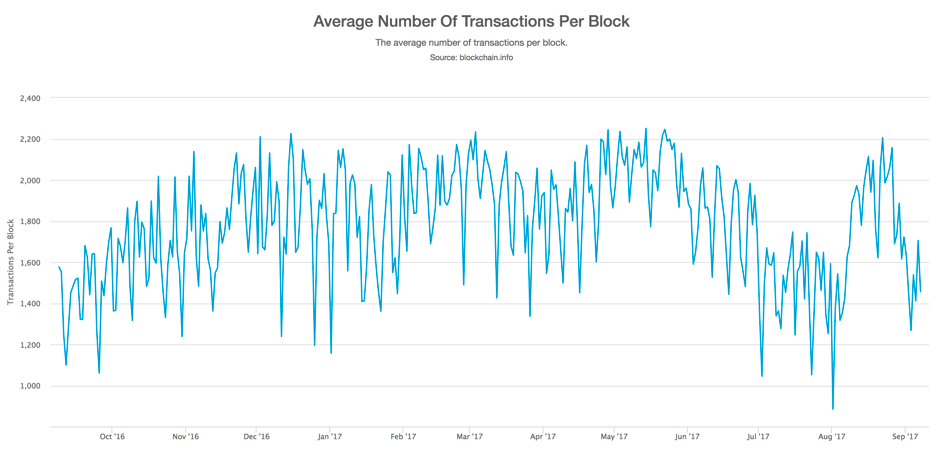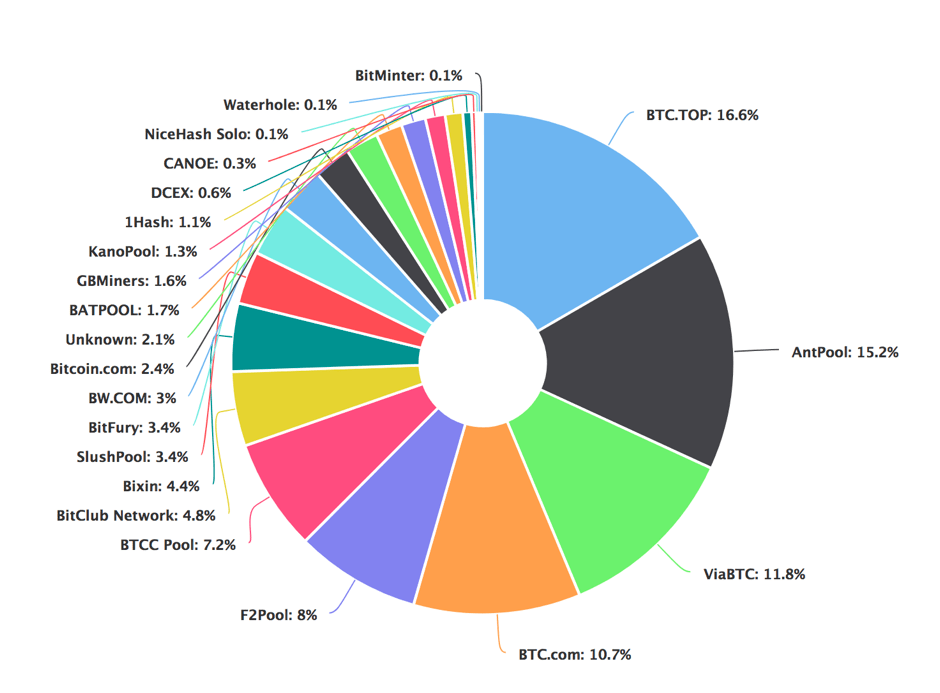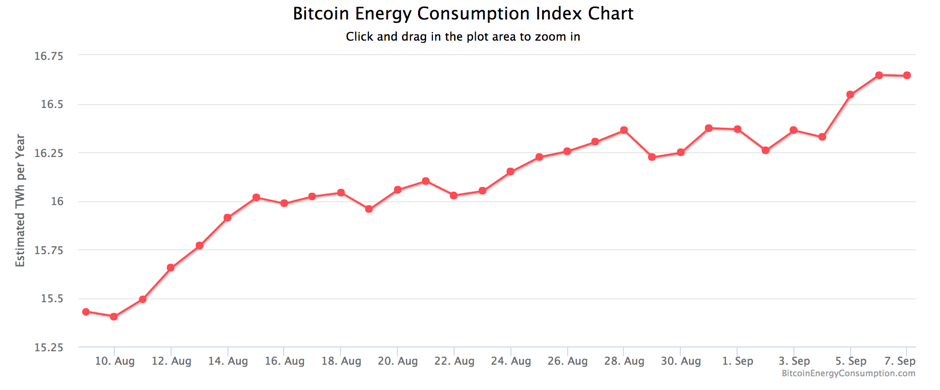Why Bitcoin Will Ultimately Fail and What Will Come Next

We live in exciting times, where it has become possible to send money across the globe nearly instantaneously, where you can create value out of nothing and where we are working towards a future that is decentralised. The first application that kickstarted this revolution was Bitcoin when it was launched in 2009. Since then, the price of Bitcoin has increased dramatically, reaching $5000 for the first time in September 2017. The news of the Chinese government banning ICO’s resulted in a brief dip in the value of the coin, as well as almost all other cryptocurrencies, but after two days it recovered already. It seems that Bitcoin continues to rise in value, with multiple people predicting that Bitcoin will reach $10.000 by the end of 2017, $250.000 in ten years, $500.000 by 2030 or would even reach a value of $ 1 million in 5-10 years. Obviously, there is a hype going on if such enormous returns are predicted.
However, I believe that Bitcoin will not reach those valuations. In fact, I believe that Bitcoin will ultimately fail and be worth nothing or close to nothing. This will probably not happen in the short term. Most likely the value will keep increasing in the months to come and a valuation of $10.000 per Bitcoin would not surprise me. After all, the hype around Bitcoin will continue to persist for some time longer. Nevertheless, in the end, Bitcoin will become the Myspace of cryptocurrencies and there are four main reasons why I believe so:
1. Transaction Costs are Too High
When Bitcoin was launched, everyone was excited about the almost negligible transaction costs. Sending money across the globe was almost free of charge and was almost instantaneously, creating a completely new world and bypassing the banks if it came to transferring money across the globe. However, things have changed. On August 25, 2017, the average transaction fee reached its highest level of $ 8,936 per transaction.

Source: Bitinfocharts
Obviously, if you wish to perform a small transaction, let’s say buying a coffee with Bitcoin, this becomes impossible. Of course, if you use Bitcoin to transfer large sums of money across the globe, hundreds of thousands or millions of dollars, such a fee is really cheap compared to what you would have to pay a bank. However, for a cryptocurrency to become mainstream, and potentially replace fiat currency, it should be usable by everyone for every type of transaction.
The cause for the high transaction fees lies in the fact that the sizes of the blocks are currently limited to 1MB per block and almost each block is completely filled. The average block size on September 8, 2017, was 993KB, which means that every block is filled up with transactions. Bitcoin was created in such a way that miners that validate transactions have to use a tremendous amount of computing power, equals energy, and if there is an increasing demand for transactions to be validated, miners will prioritise transactions that pay a higher fee. It is economics 1.1, stating that if the demand increases, but supply remains the same (number of transactions that can be validated per block), the price increases.
Another reason for the increased transaction fee is the newly created cryptocurrency Bitcoin Cash that split off from Bitcoin on August 1. Bitcoin and Bitcoin Cash are very similar cryptocurrencies, which means that miners can easily switch from Bitcoin to Bitcoin Cash, if it becomes more profitable to mine Bitcoin Cash (the rationale behind this has to do with how the Bitcoin and Bitcoin Cash protocols have been developed; if there are fewer miners, the mining difficulty goes down, making it easier to mine and hence the possibility to make more money increases. For more information, read this article). Few miners on the Bitcoin network means less supply means an increased transaction fee.
Of course, the Bitcoin community knows this as well and they are attempting to implement solutions to solve this and increase the size of the blocks, which would mean an increase in supply and a lower transaction fee. There is an ongoing debate in the Bitcoin community related to the block size, with multiple arguments in favour of or opposed to an increase in size (read an overview of the controversy here). Fact is, that without a solution to this problem, the number of transactions per second remains limited, with an increase in transaction fees as a result. Or, as Vitalik Buterin, founder of Ethereum said: “If [the niche of digital gold] is what Bitcoin users want, then they should keep the limit, and perhaps even decrease it. But if Bitcoin users want to be a payment system, then up it must go.”
2. The Number of Transactions Remains Too Low; Not Scalable
Scalability is a major issue for Bitcoin. The Bitcoin blockchain is by now 130 Gigabyte and is growing steadily with 1 MB per block, every ten minutes. The idea of Blockchain is that every node in the distributed web has a complete copy of the blockchain. So, if you wish to start validating transactions on the Bitcoin blockchain, you first have to download the entire blockchain. If the size of the blocks would increase, that would have an enormous effect on the size of the Bitcoin Blockchain, which would make it more expensive to validate transactions (since significantly more storage is required). Blocks of 2MB size would result in an increase in the Bitcoin Blockchain of, approximately, 288 MB per day, which equals 105 GB per year (the size of the Bitcoin Cash Blockchain is already at 150GB (as per September 8, 2017), since it uses block sizes up to 8 MB since August 1, 2017). Of course, even larger block sizes would dramatically increase this.

Source: Blockchain.info
On the other hand, the average number of transactions per block is approximately 2000, or an average of 3 transactions per second with an absolute maximum of 7 transactions per second. Bitcoin Cash, however, can clear up to 37.000 transactions per block, when an 8MB block is validated. Since Bitcoin Cash blocks can be up to 8x bigger, it means that at its maximum it can settle 56 transactions per second, ceteris paribus. If you compare that to VISA, which is capable of handling 2000 transactions per second, and a peak of 56000 transactions per second, it is clear that the number of transactions that can be settled per second is a major challenge for Bitcoin, making it not scalable. If Bitcoin wants to become generally accepted and used for everyday transactions, this has to be increased drastically. Unfortunately, there is an intense debate going on about this and it already resulted in one hard fork (Bitcoin Cash) and it is very likely that it results in more hard forks in the future. Obviously, too many hard forks will mean the end of Bitcoin since nobody would be able to understand which one is which.
3. Bitcoin Has Become a Centralised Currency
When Satoshi Nakamoto created Bitcoin, it was a nothing less than a revolution, creating a truly decentralised, community-powered, cryptocurrency. The power of Bitcoin was the fact that it was decentralised and not one centralised stakeholder could control the network. Unfortunately, that is no longer the case. Today, 70% of the Bitcoin’s collective hash rate, i.e. the mining power, is controlled by Chinese Mining Pools (which are groups of cooperating miners who agree to share block rewards in proportion to their contributed mining hash power). In addition, the four biggest mining pools control over 50% of the network’s collective hash rate.

Source: Blockchain.info
This centralisation of mining is a logical consequence of how the protocol was developed, as it rewards economies of scale. As a result, Bitcoin is no longer the decentralised network that it was supposed to be when it was developed. This does not have to be a problem, as long as the mining pools can be trusted and have an incentive to do the right thing. However, since most of these mining pools are in China, this could quickly change if the Chinese government decides, for whatever reason, to intervene and take over the Chinese mining pools. This centralisation of Bitcoin poses a real threat to the future of the cryptocurrency.
4. Energy Consumption of Bitcoin is Unsustainable
Finally, Bitcoin is an incredibly unsustainable coin in terms of its energy consumption. The Proof of Work consensus mechanism requires tremendous amounts of computing power. According to VICE, in 2015 a single Bitcoin transaction used roughly enough electricity to power 1.57 American households for a day. This results in an estimated annual energy consumption of approximately 16 terawatt hours:

Source: Digiconomist
CERN uses approximately 1.3 terawatt-hours per year to power the Large Hadron Collider. In fact, that is as much energy as the annual energy consumption of Iceland and it is almost 30.000 times the energy consumption of VISA (which happens to process 82.3 billion transactions in 2016, compared to the approximately 100 million Bitcoin transactions in the past year). With the increase in block size to be expected, this would increase even more. In addition, since most of the mining pools are in China, the majority of this energy consumption is driven by unsustainable coal-powered energy plants. Although of course, it is possible that miners may switch to clean energy, we still have the problem that the mining of Bitcoin is literally a waste of energy, because the complex computer calculations as part of the Proof of Work consensus protocol have no value at all. No world problems are being solved by the calculations, except to show that the calculation has been done. Unless Bitcoin would switch to a different consensus protocol, it may be clear that the energy consumption of Bitcoin is rapidly becoming very unsustainable.
The End of Bitcoin
There we have it. Four seemingly insurmountable challenges of Bitcoin:
- High transactions costs, preventing small-scale transactions or even micro/nano transactions required for the Internet of Things;
- Low number of transactions per second, which prevents it from being used in everyday life;
- A centralised cryptocurrency that can be controlled by a few mining pools, if they wanted to;
- An unsustainable energy consumption, even if all miners would switch to clean energy.
Unless the above challenges are resolved and the Bitcoin community is able to completely change the existing protocols, which seems highly unlikely to me seeing the current division among Bitcoin stakeholders, Bitcoin does not have a future and will ultimately fail. It will become the Myspace of cryptocurrencies; paving the way for a new future, but eventually not being the solution we are looking for.
What Will Come Next: The Future of Cryptocurrencies
Of course, I am not the only one who sees the above problems. Many startups are developing solutions for these problems, trying to become the Facebook of cryptocurrencies. For example, Bitcoin Cash was created to solve the issue related to the block size. Litecoin solves several issues related to Bitcoin as it processes transactions almost four times faster than Bitcoin, allows a greater number of transactions to be processed in a given time and uses a different hashing algorithm. Zcash and Monero, on the other hand, were developed to have truly anonymous and untraceable transactions (Bitcoin is pseudo-anonymous), while IOTA removes transaction fees altogether and offers infinite scalability using their TANGLE technology developed for the Internet of Things. Of course, there are more cryptocurrencies, each being used for different solutions and with different objectives. In fact, at this moment, there are approximately 900 cryptocurrencies in the market.
Five Criteria for Future Cryptocurrencies
Although it is difficult to look into the future and to determine who will become the Facebook of cryptocurrencies, I would like to offer five criteria to which I believe a cryptocurrency should comply with in order for it to become globally accepted and used:
1. Zero Transaction Fees
It may be obvious that for a cryptocurrency to become a success it should enable fee-free transactions. The beauty of cryptocurrencies is that you can divide it into extremely small portions, such as the Satoshi, or a hundredth of a millionth of a Bitcoin. However, if transferring such a small amount comes with any transaction fee, no matter how small, it becomes unfeasible. Especially with a future where connected devices will be able to trade bits of data, transactions fees are impractical.
2. Infinite Scalability
As mentioned, VISA is capable of handling 2.000 transactions per second, with a peak of 56.000 transactions. Any cryptocurrency that can handle fewer transactions than this is not suitable to replace traditional payment methods. In a future where everything is connected and makes transactions with everything, infinite scalability is a requirement.
3. Complete Decentralisation
The main advantage of a cryptocurrency is that it is decentralised, meaning no government or central bank controls the cryptocurrency and can influence the price. It is governed completely by market economics of supply and demand. Obviously, governments do not like this, which is why we will see governments developing their own cryptocurrency in the future, which will compete with other cryptocurrencies. However, for a non-government cryptocurrency to work, it should be completely decentralised.
4. No or Very Low Ecological Footprint
Bitcoin’s ecological footprint is completely unsustainable, even if it will use only renewable energy sources. Any cryptocurrency that will be used by millions if not billions of people and things should have a minimal ecological footprint. As such, any cryptocurrency using the Proof of Work consensus mechanism, which requires substantial computing power, will not work. New consensus mechanisms will need to be developed that do not require extensive computing power. Proof of Stake is an interesting approach, although still in development.
5. Token Utility
Any cryptocurrency that is developed should offer a certain value and it should increase the network effect, i.e. it should provide a utility in the ecosystem it is part of. Token velocity, explained by Kyle Samani here, is one of the key characteristics that will impact long-term, non-speculative value. It relates to whether people will hold on to the cryptocurrency as it can increase in value or they will sell it immediately. Any cryptocurrency that offers no value, has no future.
Conclusion
The future of cryptocurrencies is wide open and in the coming years, we will see plenty of new cryptocurrencies coming and going. We will see governments developing their own crypto Dollar/Euro/Pound/Yuan/Dirham, potentially even completely replacing cash. Any non-government future cryptocurrency that aims to become accepted and used by the general public should adhere to the five criteria set out here, which is why in the coming years we will see the inevitable fall of Bitcoin.
Image: Igor Batrakov/Shutterstock





